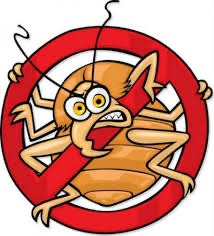
Lyme borreliosis: a gift from a tick that you definitely didn’t order, or why you should watch who hugs you after a picnic in the woods.
What is Lyme borreliosis, and why is it named after a city, not a lime?
Lyme borreliosis is an infectious disease caused by the bacterium Borrelia burgdorferi. It is transmitted by ticks of the genus Ixodes. The disease is named not after the citrus fruit, but after the town of Lyme in Connecticut, where in the 1970s an outbreak of the disease forced doctors to pay attention to this insidious microbe.
“Ixodes vulgaris”. 8 legs, 0 shame, 100% danger.
How does a “congratulation” from a tick go?
1. You go to the woods or to the country.
2. You are happy.
3. The tick is hungry and now happy too.
4. After a few days, a red ring appears on the body – erythema migrans.
5. Congratulations: now you have a “souvenir” – Lyme borreliosis.
Symptoms: from “oh, something is wrong” to “call me an infectious disease specialist”
• Phase 1 (acute):
Redness around the bite, weakness, headaches, fever. That is, the classic set for the season “spring-summer-surprise”.
• Phase 2 (after a few weeks):
Spread of microbes throughout the body. Possible damage to joints, the nervous system (neuroborreliosis), the heart.
• Phase 3 (chronic):
If nothing is done, arthritis, neuralgia and thoughts like: “Why didn’t I go to the park instead of the forest?” appear.

Erythema migrans – a red ring that is not just decoration.
Diagnosis:
• Serologic tests: look for IgM and IgG antibodies to Borrelia
• PCR: detect Borrelia DNA.
• Sometimes: doctors just look at the erythema and say, “Oh, that looks familiar!”
Treatment: Antibiotics
• Doxycycline – popular among travelers and hunters.
• Amoxicillin – for children and those who are not on friendly terms with tetracyclines.
• Ceftriaxone – in cases where the situation goes beyond “I’ll just take pills and lie down.”
The sooner you start, the less likely you are to see the third phase of this “trilogy of horrors.”
The CDC recommends the following treatment regimens for Lyme borreliosis:
1. Early stage (localized lesions)
• Doxycycline: 100 mg twice daily for 14–21 days.
• Amoxicillin: 500 mg three times daily for 14–21 days.
• Cefuroxime: 500 mg twice daily for 14–21 days.
2. Neurological complications
• Ceftriaxone: 2 g IV once daily for 14–28 days.
• Doxycycline: 100–200 mg twice daily for 14–28 days.
3. Cardiac complications
• Ceftriaxone: 2 g IV once daily for 14–28 days.
• Doxycycline: 100 mg twice daily for 14–28 days.
4. Chronic complications (arthritis, acrodermatitis)
• Doxycycline: 100 mg twice daily for 28 days.
• Ceftriaxone: 2 g IV once daily for 14–28 days.
Important: Do not self-medicate; consult your physician or infectious disease specialist for advice. Additional antibiotics are not recommended for the treatment of post-therapy Lyme borreliosis syndrome or chronic Lyme borreliosis.
Prevention: How to avoid becoming a picnic lunch
Here are the current recommendations from the Centers for Disease Control and Prevention (CDC) for the prevention and treatment of Lyme borreliosis as of 2025:
CDC recommends the following steps to prevent Lyme borreliosis:
• Avoid areas where ticks are likely to be present, such as wooded areas, brush, and tall grass, especially during warmer months.
• Use repellents: products containing DEET, picaridin, IR3535, oil of lemon eucalyptus, or permethrin (for clothing).
• Wear protective clothing: light-colored clothing with long sleeves and pants tucked into socks or boots.
• Check yourself for ticks: carefully inspect your skin after being outdoors.
• Treat clothing: permethrin for extra protection.
• Inspect your pets after walks, use tick repellents for animals.
If the tick has been attached for more than 36 hours in a risk area, a single dose of doxycycline may be recommended to prevent Lyme borreliosis.
Fact for dessert
A tick can be the size of a poppy seed, but it will cause as much trouble as a good piece of dumpling.
And so it can wait for you for hours, sitting on a blade of grass. Literally – sit and wait.
Tips for travelers
When traveling to wooded or wooded-wooded areas, especially from spring to autumn, follow these preventive measures. If you suspect a tick bite or characteristic symptoms appear, such as erythema migrans (a red rash in the form of a ring), consult a doctor for timely diagnosis and treatment.
Doctor-infekcionist Katerina Sora
Dodatna informacija:
Leave your email
and we will contact you soon